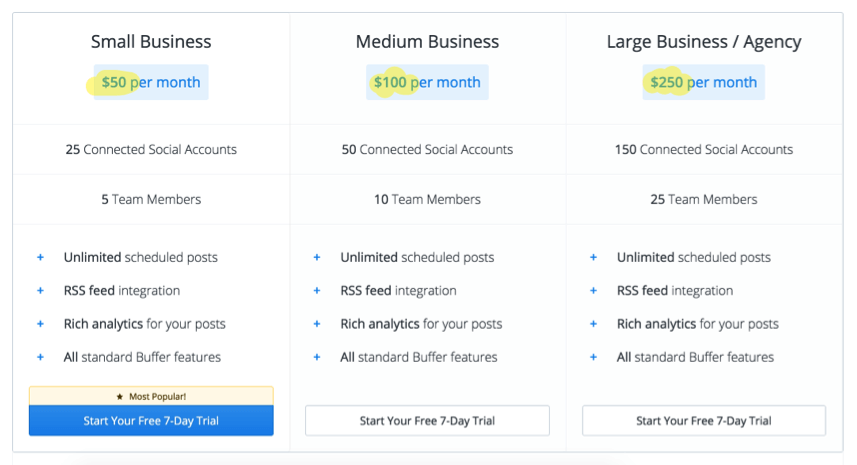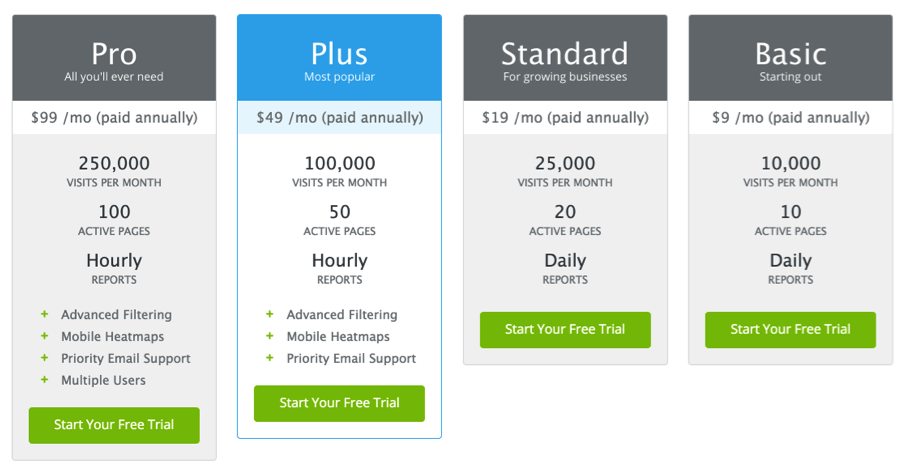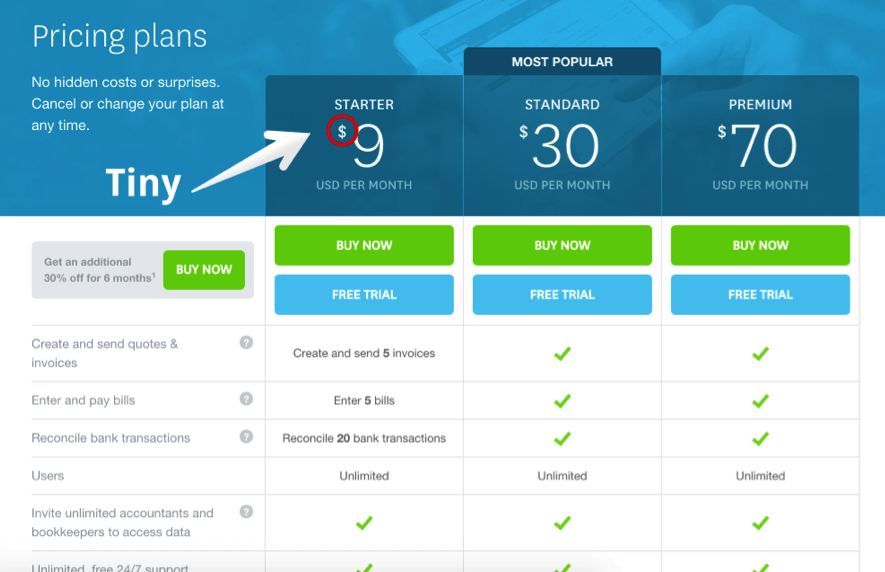Pricing involves more than assigning a dollar amount to a product. It’s about understanding the psychology of consumers, and creating a price point that satisfies cognitive needs and creates a sense of value.
When you are making the important decision of product pricing, it’s important to understand a few of these psychological features that can improve your profits and the customer’s satisfaction.
1. Use round numbers.
It’s popular in the retail industry to create prices that end in .99. Since a one-penny difference can drop a full dollar numeral, then stores use it to make customers feel they are getting a lower price.
The practice is so commonplace now, however, that shoppers don’t really notice. What’s more, most customers want round number prices anyway.
In a crowdsourced pricing survey, 57% customers chose whole dollar amounts (E.g., $4.00), and 4% chose half-dollar price points (E.g., $4.50). The mind’s demand for simplicity suggests that messy pennies on the end of a price are distracting and unnecessary.
According to Strategy-Business.com,
“The most plausible explanation is that people simply prefer round prices.” As the article goes on to explain, “Mounting evidence suggests that consumers’ desire to deal in round numbers trumps their hope that odd prices signal a sale.”
Contemporary research has verified it. A 2013 article in the Journal of Economic Psychology explains: “The tendency to select round prices/sales-totals reflects a subjective preference (or liking) for round prices.”
In other words, people like round numbers better. What should you do? Drop the pennies, and adjust accordingly.
With the higher-price of many online items, it’s not pennies that we’re dealing with. It’s bigger amounts. With these big-ticket items, marketers and price-setters simply put the nine at the end of a hundred or a thousand.
It’s the same mistake applied to larger sums.
Buffer, in keeping with a policy of openness, uses nice round numbers.
It’s a much more palatable form of pricing, and makes the price seem honest and straightforward.
2. Use the anchoring effect.
The “anchoring effect” happens when a person makes a decision based on the first piece of information that they receive.
For example, if someone mentions “$300” in regards to a SaaS product that you are considering buying, then your mind is anchored by that number. Thus, when you see the true price — $30 — then you might think “Wow! That’s a great price!” Why? Because you were thinking $300 before.
Russell James of Texas Tech used this definition in his explanation:
Our minds crave a reference point, and will instinctively latch on to any reference point, even if it’s obviously way off.
The Guardian has described the anchoring effect as “something rather disturbing about the human mind.” As disturbing as it seems, once you’re aware of it, you can use it to your advantage.
A (previous) Wufoo pricing page used anchoring in the following way. Most web users look at a page from left to right. Wufoo positioned the highest price on the far left. The first price that the user saw was $199.95. This price created the anchor. All the prices after this one were lower, creating the anchoring effect illusion of a killer deal.
CrazyEgg’s pricing page is set up using this technique, too. The Pro model, which is the most expensive, is positioned first. Viewers are anchored by the $99, and perceive the Plus form as an amazing deal. It’s only half the price of the Pro!
3. If customers complain the price is too high, they aren’t actually concerned about the price. Raise the product value, but don’t lower your price.
A Forbes article on product pricing explains, “Remember: if people are complaining that prices are too high, that tells you something.”
But what does it tell you? There are two possibilities.
- The customer does not have the money to buy it. That’s their fault. If they can’t buy it, you are not responsible for fixing that problem.
- The customer does not feel like they are receiving value from the product. But whose fault is that? It’s your fault.
For example, someone might say, “A Ferrari is too expensive.” But is it really too expensive? Absolutely not. A Ferrari is a car of exquisite value and fine craftsmanship. What the “too expensive” customer meant to say was, “I don’t have the money to spend on a Ferrari.”
Their complaints tells you that they want more value. What do you do? Improve your value, but keep the price the same.
“Too expensive” is code word. Expensive is a good thing, not an automatic negative.
People like to own expensive things. They appreciate the sense of status and worth that they receive from being able to purchase and own a product that cost a lot of money.
They will start to complain, however, if they don’t feel like they are receiving value from the product. You can fix that. You can’t fix the fact that they don’t have enough money.
Shannon Malone, quoted in Mashable, explains a helpful way to view the value question:
Value is a price-to-quality ratio, and we always try to provide value to stay competitive.
What did he say about price? He doesn’t change it. He provides value instead.
4. Make it more expensive.
A product’s price defines how people perceive its value.
Robin Goldstein et al., set out to answer the question “Do more expensive wines taste better?” I would think, “Sure, but only if it is truly a better wine. The cost of a wine can’t change its taste, right?
Right…?
In strict molecular terms, a product’s price cannot change that product’s composition and therefore its taste. But the mind doesn’t work in strict molecular terms. It functions according to the randomness of psychology. Such was Goldstein’s discovery when he realized that wine tasters assigned a superior taste to the same wine when it had two different prices.
Test subjects didn’t realize that they were tasting the same wine. All they saw was a price tag. The price influenced their perception of the taste.
A higher expense creates an illusion of greater value. As you may remember from the point above, that’s what people are seeking when they purchase an item. They are seeking value.
A customer seeks to justify their expenditure based on the value that they think they’re getting. One way in which they justify that expenditure is the simple fact of the amount they spent. If a customer spends $200, they will self-justify their expenditure as being more valuable as obtaining the same item for $20. Why? Because they spent more money on it. That’s all.
This technique is prestige pricing. Prestige pricing creates unnecessarily high prices simply to affect the customer’s perception of the brand’s value. Lower prices would harm the value perception of the brand.
If customers value the image of your brand and the features of your product over those of your competitors, then prestige pricing (also known as image pricing) can help you capture value despite the production costs or quality of the product. (Source)
5. Get rid of the dollar signs.
Dollar signs are a symbol of spending money. This much is obvious.
Does such a symbol help or hurt when you create your pricing page? As it turns out, dollar signs can hurt. Why? Because a customer sees the symbol, feels the pain of spending, and gets gun-shy about the purchase.
You may have eaten at restaurants where the menu was devoid of dollar signs.
Why no dollar signs? Cornell researchers discovered that “price formats do influence customers’ spending, both in terms of total check and spending.” In specific, having no dollar sign encourages higher spending.
Dollar signs create an unconscious cognitive barrier to spending. When the dollar sign is there, the customer is more aware of the price over the product.
But how do you do this on your pricing page? Can you simply remove dollar signs? Probably not. But you can make them smaller.
Xero has the small dollar signs, allowing you, the user, to essentially ignore the fact that you’re spending money, and focusing on what you’re getting.
Conclusion
A customer wants to feel value when they buy. Your pricing can give them that sense of value. At the same time, the right pricing will provide you with the level of profits that you need.
In this way, it’s a win win. Use these psychological tactics, and you’ll get to that level.
What psychological tactics do you use in product pricing?
About the Author: Neil Patel is a lifelong evangelist of KISSmetrics and blogs at Quick Sprout.







No comments:
Post a Comment